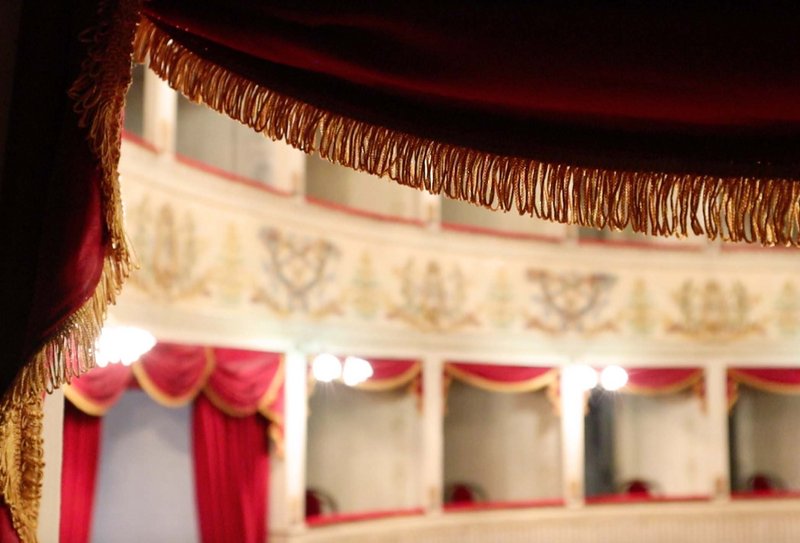 The organisation, repertoire and original scenic materials of Feltre’s Teatro sociale (1797–1866)
The organisation, repertoire and original scenic materials of Feltre’s Teatro sociale (1797–1866)
Deutsch English Français Italiano
Summary
This research project is focused on the theatre in Feltre (Veneto) from 1797 to 1866 – thus at the time when the Hapsburgs governed Veneto, up to the time of Italian independence.
The Feltre Theatre is of great significance as an object of research. First, because it is one of the few places where original scenic materials have survived from the 19th century. Secondly, because as one of the innumerable Italian “provincial” theatres of the 19th century, its unusual wealth of source materials about the theatre business, repertoire and administration means it bears testimony to a vibrant tradition of theatrical practices that have remained little investigated to the present day. In 19th-century Italy, city theatres were one of the few places where groups of people could gather together, and where events could take place at which public opinion could be shaped, monitored and steered. For this reason, the Feltre Theatre is also of immense interest as a centre of opinion-making and of socio-political organisation.
This project will investigate the history of the theatre building, its interior spaces, its scenic materials, its performances, its forms of organisation (directors, impresarios, theatrical troupes etc.), the administration and practices of the theatre company itself, the social localisation of its audience members, and popular tastes. To this end, the Feltre Theatre, its stage materials and repertoire will be analysed using a micro-historical approach in the socio-political context of Hapsburg rule of Lombardo-Venetia. We shall pay special attention to forms of social life and to studying social networks that formed around the Feltre Theatre and its fellow provincial theatres in northern Italy. The relationship of the centre to the periphery and a comparison with other north-Italian theatres and other forms of cultural transfer (both national and transnational) will have a central role in our investigations with regard to repertoire, musical styles and theatre sets.
Research group/Literature
The research group comprises three researchers: Raphaël Bortolotti, a doctoral student at the University of Lausanne and a research associate at the Bern University of the Arts HKB, will investigate the visual aspects of the theatre; Giulia Brunello, ...
Stage materials
The sets that have survived in Feltre offer us an extraordinary opportunity to investigate artistic practices that were widespread in the 19th century, but of which we have only a few extant examples. The sets in Feltre are of the type that were ...
Censorship
We know that censorship authorities monitored theatrical performances especially closely in Italy, as in the rest of Europe. By looking at a concrete case such as that of the Feltre Theatre (also taking care to compare it with similar cases), we can ...
Reception and audience taste
How were these performances received by the public? We know that theatrical troupes were prompted to change their programmes depending on the reactions of their audiences (most obviously when a work flopped). Sometimes, these changes were made ...
The repertoire of the provincial theatres
From the 1830s onwards, the cultural panorama shifted in Italy, under the influence of other European theatre cultures. There was an increasing interest in tragic Romantic operas, which now gained in significance alongside opera buffa and the ...
Societal actors in and around the theatre
A multitude of social actors were involved in organising and carrying out performances and in deciding the repertoire to be played: the theatre management, the box owners, professional orchestras, singers and theatrical troupes from all over Italy, ...
Theatre as a site of societal exchange and opinion-forming
As the research of the past decades has been able to show (Sorba 2011; Morelli 2012; Pullini 1986), the theatre in 19th-century Italy was a place where urban entertainment practices were manifested. The local urban elites often met at the theatre – ...
The significance of provincial theatres
From the 1820s onwards, many new theatres opened in northern Italy, and older theatres were renovated. Every little town tried to set up its own theatre as a matter of regional pride.
Theatrical performances took place at certain times of the year, ...
The history of the Feltre Theatre
From the 17th century onwards, the Feltre Theatre was situated in the Palazzo Pubblico o della Raggione in the centre of town. It was called the Teatro della Senna, had two tiers of balconies with 20 boxes, and was used for performances of comedies ...